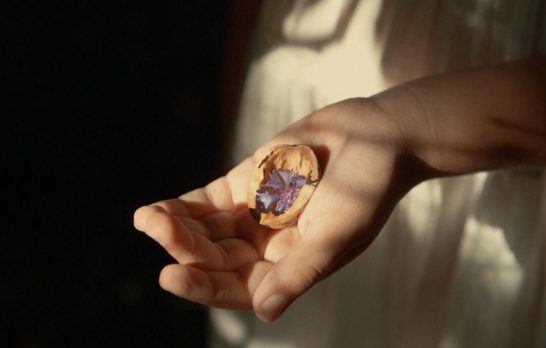ABOUT Cinéhaïku
The Cinéhaiku Association was conceived in 2016 among friends who wanted to unite their love of both short film and poetry, in particular haiku poetry. Cinéhaïku founder Clara Molloy said that idea of linking the two forms came after reading La Preparation du Roman by Roland Barthes, in which the author makes several references to haikus as the best form of interpreting the present.
“As I began reading haikus, I felt I could see them in my mind. They do not need any image because they are so beautifully written that they stand for themselves. Still, I was curious of this link between poetry and image, and I thought we could try this as an exercise,” Clara said in an interview with IRK Magazine. “Haikus have their own rules, this is what I find the most interesting. Short films could be about anything. With haikus, you have to accept a special way of telling things, special subjects, a subtleness.”
What is A CINÉHAÏKU?
Cinéhaïku is short poetic film in three sequences and lasting between 20 to 30 seconds in length. The name is derived from the words “cinema” and “haiku”, a very short poetry form of Japanese origin. In a Cinéhaïku, the haiku is reimagined and expressed in an audio-visual format.
A short film of 3 sequences
10 seconds maximum for each plan for a total of 20 to 30 seconds
WHAT IS A HAIKU?
“A sentence that’s short and sweet with a sudden jump of thought in it, is a kind of haiku”
Jack Kerouac.
Notes on the book by Barthes: The Preparation of the Novel, Editions du Seuil:
- Haiku is a short, 3-line poem.
Its form on the page is aerated. You know you won’t have time to be bored.It is an interval on the page and in time, a “Ma”, an “utsuroi”: the moment when the flower will wilt and when the soul remains suspended in the void between two states.
It is “the art of reducing the infinite pleasure of emotion to its essence”. (Yamata).
It has a short/long/short rhythm, 5/7/5 syllabic structure. - It must contain a “season word”, i.e. a word that gives an indication (even slight) of the season in which the haiku is set.
THE WINTER WIND BLOWS
THE CATS’ EYES
BLINK
(BASHO) - It provokes “satori”, a mental jolt or trigger, to become “conscious of the unconscious”, an enlightenment. It is there and gone in the blink of an eye.
THE KITTEN
HOLDS DOWN THE LEAF
FOR A MOMENT
(ISSA) - It captures a lived moment. It’s true. “That’s it!” There is an element of truthfulness. It happened. I have an intimate memory of it. It is the euphoria of feeling it. It elicits assent, acceptance, agreement. It is absolutely just. It creates an effect of the real, by a division of the real:
PEELING A PEAR
SWEET DROPS TRICKLE DOWN
A KNIFE
(SHIKI) - There are many “tangibles”, things you could touch, sensory objects.
WHITE VERBENA BLOSSOM
IN THE MIDDLE OF THE NIGHT
THE MILKY WAY
(GONSUI) - It is sometimes synesthestic, you perceive several sensations at the same time:
PATHS ON THE MOUNTAIN
DUSK ON PINK CEDARS
BELLS IN THE DISTANCE
(BASHO)
- Sometimes one art is used to show another. Here, in this case, touch is shown through hearing:
THE SOUND OF A RAT
SCRATCHING A PLATE
HOW COLD IT IS!
(BUSON) - The reader often senses a cut sound:
THE ROAD OVER THE AUTUMN MOOR
SOMEONE IS COMING ALONG
BEHIND ME!
(BUSON) - The haiku stirs emotion, in a Japanese way. A dispersed emotion. Unlike in the West, politeness shows warmth and affection in Japan. Politeness and emotions blend together.
Poetry is discreet, it has a silent lyricism. It evokes things indirectly without being symbolic. It stops just before the effect.MISTY RAIN
TODAY IS A HAPPY DAY
THOUGH MOUNT FUJI IS UNSEEN
(BASHO) - Fuji is taboo in haiku: one does not talk of Mount Fuji, it is too intense. In 400 years of poetry, this is the only haiku that mentions it, and it is hidden…
- It contains kireji, a type of exclamation: Ah, Oh, etc. The body is overcome and says “Oh…”
THE OLD POND
A FROG JUMPS IN
OH! THE SOUND OF THE WATER
(BASHO) - It refers to eternity, to the hyper-consciousness, the smallest reaching the largest, through the “emotion of tranquility”. John Cage also thought that of all the emotions, tranquility was the most important.
EVERYONE IS ASLEEP
NOTHING ELSE
BUT THE MOON AND I
(SEIFUGO) - It refers to naturalness. One day a monk asked a master: “When speech and silence are both forbidden, how one can avoid falling into error?” The master replied: “I always remember Kiangsu in March, the cry of the partridge, the mass of fragrant flowers.”
WHAT A HAÏKU IS NOT
- No sharpness, no negativity.
- No lyricism, no feelings of love. No carpe diem. Love is the opposite of haiku, love obliges you to talk about yourself. Haiku uses “I” but to forget oneself. “I” is shown through the body.
FRESHNESS
MY FEET AGAINST THE WALL
A NAP
(BASHO) - No real narration. A good haïku is one that cannot be continued. There is nothing to add.
IN TEARS,
SEATED,HE RECOUNTS
HIS MOTHER LISTENS
(HASUO)
- No ideology, no meaning, no eroticism, no symbolism, no heaviness:
HOW ADMIRABLE HE IS
WHO DOES NOT THINK “LIFE IS EPHEMERAL”
WHEN HE SEES A FLASH OF LIGHTENING
(BASHO)


